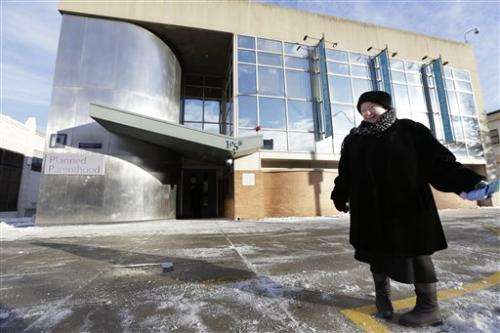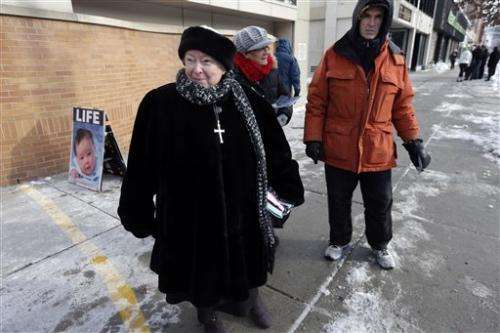US high court voids abortion clinic buffer

The Supreme Court on Thursday struck down a 35-foot (10 meter) protest-free zone outside abortion clinics in the state of Massachusetts.
The justices were unanimous in ruling that extending a buffer zone that far from clinic entrances violates the U.S. Constitution's First Amendment rights of protesters.
Chief Justice John Roberts said authorities have less intrusive ways to deal with problems outside clinics and noted that most of the problems reported by police and the clinics occurred outside one Planned Parenthood facility in Boston, and only on Saturdays when the largest crowds typically gather.
"For a problem shown to arise only once a week in one city at one clinic, creating 35-foot buffer zones at every clinic across the Commonwealth is hardly a narrowly tailored solution," Roberts said.
In general officials at these clinics said they are most concerned about safety because of past incidents of violence. In 1994, a gunman killed two receptionists and wounded five employees and volunteers at a Planned Parenthood facility and another abortion clinic in Brookline, Massachusetts. The most recent killing was in 2009, when Dr. George Tiller, who performed abortions, was shot in a church in Wichita, Kansas.
The political debate over abortion shows no signs of being resolved, more than 40 years after the Supreme Court legalized the procedure in the case of Roe vs. Wade. Young people today are somewhat more conservative on the issue than middle-aged Americans, but the nation is split on the deeply personal issue.

While the court was unanimous in the overall outcome, Roberts joined with the four liberal justices to strike down the buffer zone on narrower grounds than the other more conservative justices wanted. In a separate opinion, Justice Antonin Scalia criticized Roberts' opinion for carrying forward "this court's practice of giving abortion-rights advocates a pass when it comes to suppressing the free-speech rights of their opponents."
Scalia said state and local governments around the country would continue to be able to "restrict antiabortion speech without fear of rigorous constitutional review."
Still, abortion rights advocates lamented the decision and said it compromised the safety of women seeking abortions.
"This decision shows a troubling level of disregard for American women, who should be able to make carefully considered, private medical decisions without running a gantlet of harassing and threatening protesters," said Cecile Richards, president of Planned Parenthood Federation of America.
Mark Rienzi, who represented the protesters at the Supreme Court, said, "The government cannot reserve its public sidewalks for Planned Parenthood, as if their message is the only one women should be allowed to hear. Today's decision confirms that the First Amendment is for everyone, and that the government cannot silence peaceful speakers."
The justices will meet one last time on Monday to hand down decisions in cases involving the Obama health law requirement that employers cover women's contraception in their employee health plans and the ability of unions representing government employees to collect fees from workers who don't wish to join the union..
The buffer zone case began when Boston-area grandmother Eleanor McCullen and other abortion opponents sued over the limits on their activities at Planned Parenthood health centers in Boston, Springfield and Worcester. At the latter two sites, the protesters say they have little chance of reaching patients arriving by car because they must stay 35 feet not from the clinic entrances, but from the driveway to those buildings' parking lots. Patients enter the building through the parking lots, which are private property.
Planned Parenthood provides health exams for women, cancer screenings, tests for sexually transmitted diseases, birth control and abortions at its clinics.
The organization said that the buffer zone has significantly reduced the harassment of patients and clinic employees. Before the 35-foot zone went into effect in 2007, protesters could stand next to the entrances and force patients to squeeze by, Planned Parenthood said.
© 2014 The Associated Press. All rights reserved.


















